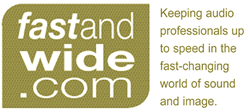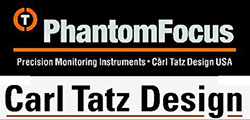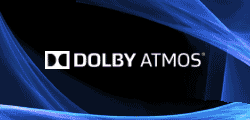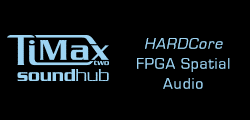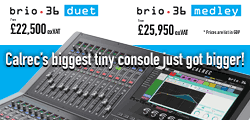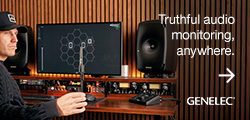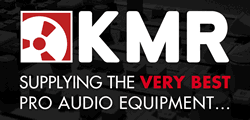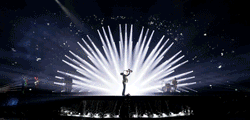![]() A growing congregation, an ageing sound system and changing worship services left the James River Assembly in Springfield, Missouri, with a problem. It sought a solution with Special Event Services.
A growing congregation, an ageing sound system and changing worship services left the James River Assembly in Springfield, Missouri, with a problem. It sought a solution with Special Event Services.
The answer to its needs made it one of the first US venues to install DiGiCo’s SD5 console, as well as an Outline GTO loudspeaker system, and have given its sound and its services a new lease of life.
‘When the previous system was designed, the church was using a classic contemporary musical style, which included a choir and orchestra,’ says JRA Audio Director, Stephen Maddox. ‘Since that time the church has transitioned musically to a rock/contemporary style of worship, but the old sound system wasn’t able to keep up with the output. The speakers were the main culprits and got the conversation started for the revamp.
‘We knew it would be a large undertaking, and would require us to modify the architecture of the room, and update the microphones, sound board and so on.’ Maddox continues. ‘We moved forward with the vision of our Lead Pastor John Lindell in mind. It was a team effort from the whole staff here.
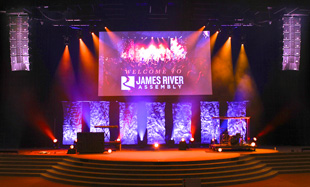 ‘We needed to put in a system that conveyed the spoken word throughout the auditorium, as well as have enough horsepower to present the music in an effective way,’ says Special Event Services (SES) co-owner, Jason Farah.
‘We needed to put in a system that conveyed the spoken word throughout the auditorium, as well as have enough horsepower to present the music in an effective way,’ says Special Event Services (SES) co-owner, Jason Farah.
‘Loud isn’t better. Better is better, and the Outline GTO system was the best choice for this installation.'
The church seats approximately 3,400 congregants, with the seating in the main room in a 280° arc to centre stage. The new system is comprised of main LR arrays, each with six GTO cabinets and one GTO down-fill speaker at the bottom of the array. The subwoofers are Outline Lab 21 HS, employing 21-inch bass speakers. The system is driven by Powersoft K8 amplifiers with XTA DSP control.
Because the platform is so large, the subwoofers are lined up stage centre behind the scenic pieces on the stage floor as a sub arc delay system. This ensures that all areas of the room enjoy equal bass coverage. The extreme right and left sides are covered with Outline Doppia II speakers.
‘Once we decided on the PA, we moved on to looking for consoles,’ Maddox explains. ‘We’d been using the Yamaha PM1D since 2004, but once we heard the company wasn’t making the board anymore we started looking around more aggressively than before. We considered various options at InfoComm – we looked at and loved the SD7, but it was a bit larger in input and output count for what we do. Once we saw the SD5, we knew it was perfect.
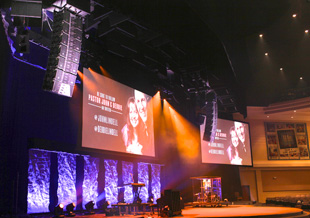 ‘I loved the layout; it had the functionality of the SD7 but half the inputs and therefore cost less money. At that point, all the features made it beyond competitive, and that solidified it for me. Additionally, Group One’s trade-in offer, which saved us from having to figure out what to do with the old console. It’s always difficult to find a buyer of used gear.’
‘I loved the layout; it had the functionality of the SD7 but half the inputs and therefore cost less money. At that point, all the features made it beyond competitive, and that solidified it for me. Additionally, Group One’s trade-in offer, which saved us from having to figure out what to do with the old console. It’s always difficult to find a buyer of used gear.’
The ‘trade-up’ offer being made in the US by DiGiCo distributor Group One Limited enabled the church to replace its old digital console, while earning credit toward the purchase of two SD5s plus an SD10. The consoles provided a perfect fit, offering flexibility, expandable I/O for future growth, and a streamlined audio footprint for its South Campus as well as its West Campus, which opens in December 2012.
Maddox selected the SD5 for the main campus FOH after seeing its debut at the 2012 InfoComm show, adding an SD10 for monitors. An additional SD5 was purchased for FOH at the West Campus with Technical Engineer Brian Roggow overseeing the installation.
JRA removed the old consoles after a Sunday morning service and had the DiGiCo desks ready for rehearsals the following Tuesday. ‘Timing is always a big factor,’ Maddox says. ‘You need to sell the desk, pull it out, buy the new desk and replace it – all in one day. But the trade-up programme allowed us to commit to the purchase, pull the old desk, install the new SD5s and we didn’t have to be concerned with any unknown problems that could arise.’
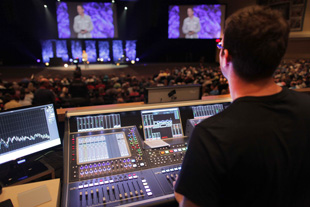 Having consistency between the consoles at both campuses was also an advantage: ‘It’s not like each venue is different,’ Maddox says. ‘It’s the James River sound. Our tagline is “one church, two locations”. We want the experience at either campus to be the same. The 1D was a nice board at the time we bought it, but it lacked the warmth and depth that the DiGiCo has. When we first turned it on, I could hear the difference. It’s a very clear console, very warm, and the clarity alone is a nice feature in itself.’
Having consistency between the consoles at both campuses was also an advantage: ‘It’s not like each venue is different,’ Maddox says. ‘It’s the James River sound. Our tagline is “one church, two locations”. We want the experience at either campus to be the same. The 1D was a nice board at the time we bought it, but it lacked the warmth and depth that the DiGiCo has. When we first turned it on, I could hear the difference. It’s a very clear console, very warm, and the clarity alone is a nice feature in itself.’
The console’s flexibility was another bonus for both engineers… ‘I think the DiGiCos are very easy to understand and get around on,’ Roggow offers. ‘You can see a lot of information at a quick glance. I like the fact that they can easily be multi-user, multitasking consoles. I like that much better than a single-channel control approach, too.’
‘With a lot of consoles, you’re limited by its design in how you have to use it,’ Maddox adds. ‘Since I started programming on the DiGiCo, it’s been very much of a, “this is what we’re giving you, how do you want to use it?” experience. That was extremely beneficial to me because no longer was it how do I have to do it but rather how do I want to do it. Part of that intuitiveness is being able to lay out the console like you want to, with either a musical or logical layout, for a specific part in our service; it’s very straightforward and easy to program. Some of the specific features I like are the floating inputs, allowing you to put anything where you want it. The virtual soundcheck is a huge performance boost, allowing you to mix without people on stage. Also, the Set Spill option is great. Even though I have each piece of the band individually laid out in layers and banks how I want, it’s nice to be able to spill them out and it allows me to have the whole band show up on both banks with quick access to them.
‘The macros are a huge plus, too, giving you the flexibility to program them for any scenario you can imagine because you can virtually program anything on the desk to a Macro.”
The Waves SoundGrid Bundle included with the desks also adds to the appeal: ‘Having them as an option is great but everything onboard is pretty phenomenal and the console itself is good enough on its own – from the DigiTubes, which give you the nice dynamic, tube-quality EQ, to the onboard dynamic EQ, to the multiband compressor or built-in de-esser. I would be fine if I didn’t have the Waves plug-ins, but they give you more to paint with and they’re a nice option to have. The PuigChild, modelled after the Fairchild, is a favourite, or the CLA compressors. The C6 is a great multiband compressor and it’s very easy to use. The Renaissance De-Esser is good, as is the SSL Compression or the SSL Channel Strip with its compressor and EQ options.’
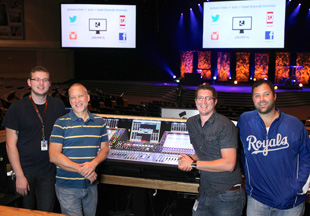 The church members charged with the upgrade were diligent in listening to various top-shelf systems to evaluate their sound and quality, including listening to installed systems around the country.
The church members charged with the upgrade were diligent in listening to various top-shelf systems to evaluate their sound and quality, including listening to installed systems around the country.
Along with new in-ear monitor systems – a wired Shure PSM 600 for the six-to-seven-piece band, wireless Shure PSM 900 for the three to four main leaders and soloists, and Sennheiser EW500 G3s, (each with a stereo mix), for the five to six background singers – the SD10 monitor desk has also proven popular.
‘I don’t think I’ve ever had such an easy experience on a monitor console,’ offers Maddox. ‘It’s all right there and a very nice, simple process. Our in-ears are so much clearer and sound so nice. It’s been a seamless upgrade and a great experience for everyone.’
‘The layer feature makes it simple to move around the board,’ says main monitor engineer, Tucker Fredock. ‘Also, since we have so many different musicians that play each week, I can save their mixes as mix presets. It’s great to have a touchscreen on the SD10 (we didn’t have one on the PM1D). The DiGiCo Gain Tracking is very accurate since in our setup FOH has gain control and it seamlessly follows when FOH makes adjustments. I love the multiband compressors and use them on the output mixes.
‘Also, because we’re running the console in 96kHz, it brings out more of the clarity in each instrument. The drums sound fuller and the voices stick out more in the mixes, kind of like a 3D image. Overall, I think the SD10 is a better product than what we were using before.’
‘Our lead pastor had a vision of how the new system should sound, and after listening to many systems here and in other parts of the country, SES brought in the GTO,’ says Maddox. ‘The GTO speakers were superbly clear and present without being overbearing. We just loved how it worked, how it sounded, and how it responded. The system is very deep but at the same time warm and inviting. This system truly brings us into the future.
‘The venue sounds phenomenal in every way,’ he concludes. ‘It’s the whole package. The pastor even expressed that he could tell we had a much superior audio quality than before. It’s got a lot of people talking about it – the clarity, the definition, the warmth and the pleasantness of the whole system itself. These system improvements give us so much more clarity in what is such a large room, not only for the musical but also more importantly for the spoken word portions. It’s a night-and-day experience all around for us. And the cachet of having one of the first SD5s was great for us, too. It wasn’t something we expected but it’s been very cool for the whole team.’




